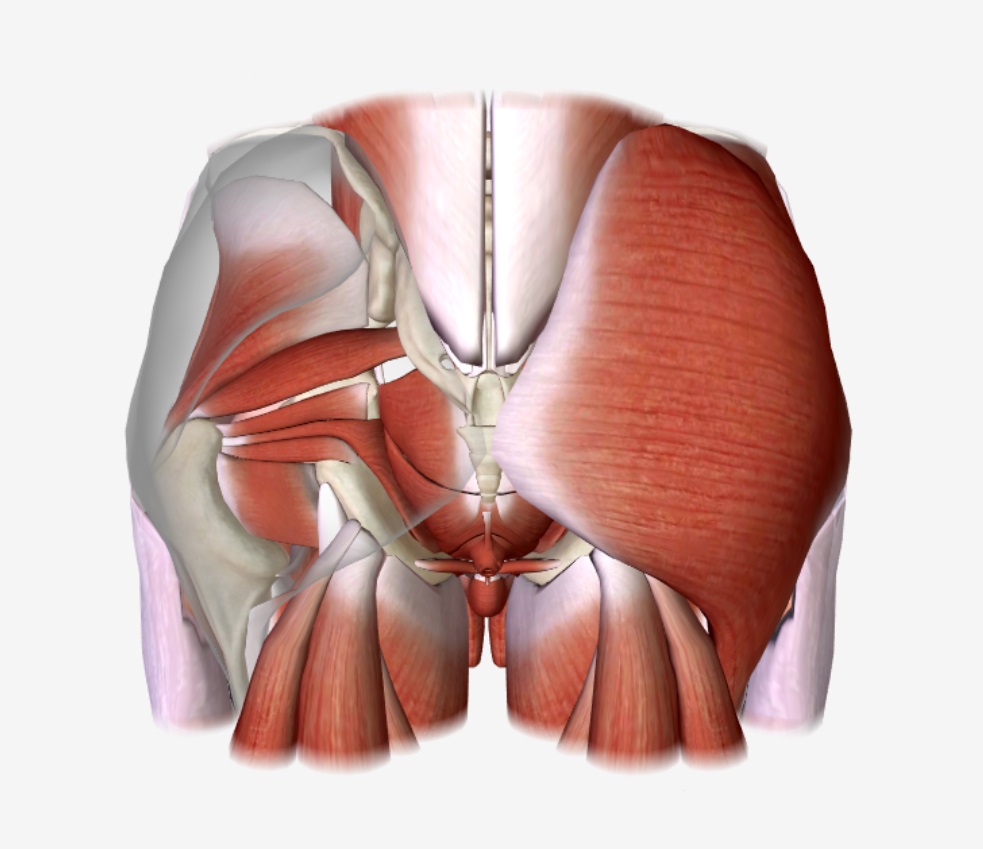Playlist
Show Playlist
Hide Playlist
Arterial Supply of the Gluteal Region
-
Slide Arterial Supply of the Gluteal Region.pdf
-
Reference List Anatomy.pdf
-
Download Lecture Overview
00:01 Now let's have a look at the arterial supply of the gluteal region. 00:05 So here we're having look at that similar view from previously. 00:09 We've removed the left ilium to look at the internal surface of the right hemipelvis. 00:15 Here we can see internal iliac and it's giving rise to a blood vessel that's associated with an important muscle we've seen before piriformis. 00:23 Remember, piriformis comes from the anterior surface of the sacrum. 00:27 It passes laterally through the greater sciatic foramen to attach to the greater trochanter. 00:32 Here we've got internal iliac artery, which gives rise to a series of blood vessels. 00:37 Here we've got superior gluteal artery, which is within the pelvis, but leaves to enter the gluteal region via that greater sciatic foramen. 00:46 Specifically, it does this superior to piriformis via that suprapiriform foramen. 00:53 We can also see here, we have the inferior gluteal artery. 00:56 This also goes to the greater sciatic foramen, but inferior to piriformis via this infrapiriform foramen. 01:03 So two important arteries here that come off the internal iliac within the pelvis, and then leave the pelvis to go and supply the gluteal region. 01:13 Here we can see them on this lateral aspect of the hip joint, lateral aspects of the gluteal region, and we can see both the superior gluteal artery passing out of the Suprapiriform foramen. 01:26 And here we have the inferior gluteal artery passing out of the infrapiriform foramen. 01:33 So let's continue having a look at the vascular supply of the bones and the muscles within this region. 01:39 So the inferior gluteal artery that we've spoken about coming out inferior to piriformis is going to supply piriformis superior and inferior gemellus, obturator internus, quadratus femoris and gluteus maximus. 01:55 The superior gluteal artery coming out from above piriformis is supplying gluteus medius and gluteus minimus. 02:02 It also has a contribution to piriformis and gluteus maximus and it also supplies the tensor fasciae latae muscle. 02:09 Now let's have a look at some of these very important anastomoses around the bones of the hip joint and also the soft tissue structures around the gluteal region. 02:19 So we've got piriformis here to orientate ourselves, and we're looking at the posterior aspect of a right hemipelvis. 02:27 We can see our friend here, the superior gluteal artery, superior to piriformis. 02:32 And we see it sibling inferior to piriformis here, inferior gluteal artery. 02:38 We can also see coming down from the anterior aspect, which is why the top of it is blocked out the femoral artery. 02:44 And we also see where it's given rise to the deep femoral artery here as well. 02:49 Remember, this happens at the level of the femoral triangle. 02:53 We can then see coming off this deep femoral artery, a few muscles were spoken about before. 02:58 We have the medial femoral circumflex artery and we also have the lateral femoral circumflex artery. 03:05 We can now start to see as the deep femoral artery is descending, that first perforating branch that comes from it. 03:12 So as the deep femoral artery supplies deep alongside the femur, it gives rise to a series of perforating artery. 03:19 And here is that first perforating artery. 03:22 That is going into anastemose with the descending branch of the circumflex artery. 03:27 And that helps to form some redundancy and an anastomotic loop around the head of the femur and the hip joint.
About the Lecture
The lecture Arterial Supply of the Gluteal Region by James Pickering, PhD is from the course Fasciae and Neurovasculature of the Lower Limbs.
Included Quiz Questions
Through which opening does the superior gluteal artery leave the pelvis?
- Suprapiriform foramen
- Infrapiriform foramen
- Obturator canal
- Adductor hiatus
- Abductor hiatus
The inferior gluteal artery supplies blood to which muscles? Select all that apply.
- Piriformis
- Superior gemellus
- Obturator internus
- Inferior gemellus
- Gluteus medius
The superior gluteal artery supplies which muscles? Select all that apply.
- Tensor fasciae latae
- Gluteus medius
- Gluteus minimus
- Obturator internus
- Inferior gemellus
Customer reviews
5,0 of 5 stars
| 5 Stars |
|
5 |
| 4 Stars |
|
0 |
| 3 Stars |
|
0 |
| 2 Stars |
|
0 |
| 1 Star |
|
0 |




